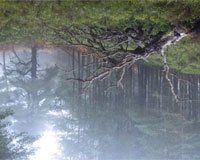Evaluating your images upside down can lead to a better understanding of balance and composition
posted Friday, March 22, 2019 at 5:30 AM EST

Landscape and nature photographer Simon Baxter would much rather spend his time behind the camera rather than sitting at a desk working on images. This approach to photography informs not only his capture techniques, but also his post-processing workflow.
When capturing an image, Baxter aims to be clear about his intentions for the final image, including an understanding of his feelings and thoughts of a particular scene. To help make the editing process quick and efficient, Baxter makes small, simple adjustments in Adobe Lightroom which help reinforce his feelings about the scene. Typically, Baxter doesn't make many adjustments to exposure, shadows or highlights because he works hard to make a strong exposure right in the camera. When adjusting contrast, he uses the tone curve rather than the contrast slider because he finds the results to be more natural-looking.
After sharpening his image using a mask in Lightroom, as you can see in the video below, Baxter's next step is an interesting one, he turns his photo upside down. Why does he do this? The primary reason for him doing this is to "remove your natural relationship with recognizable objects." The benefit of doing this is that you can then be more objective about the overall composition and balance within your frame. Once your image is upside down, you might start to notice imbalances in brightness, tone or color that you didn't notice before.
To see more of Simon Baxter's work, visit his website and subscribe to his YouTube channel.
(Via Simon Baxter)